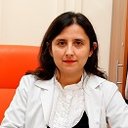Risk of gastric cancer in children with Helicobacter pylori infection.
Açar sözlər
Mücərrəd
BACKGROUND
Helicobacter pylori (H. pylori) is the most common chronic infectious agent in the stomach. Most importantly, it may lead to atrophy, metaplasia and cancer. The aim of this study was to investigate the incidence of H. pylori infection and to detect early mucosal changes that may lead to malignant degeneration in children.
METHODS
Children who underwent upper gastrointestinal endoscopy were included. Familial history of gastric cancer was noted. Endoscopic examinations were performed by a single pediatric gastroenterologist. A minimum of three biopsy samples were collected during endoscopy. The patients were accepted as H. pylori infected if results of biopsies and rapid urease test were both positive. Biopsies were evaluated for the presence and degree of chronic inflammation, the activity and severity of gastritis, glandular atrophy and intestinal metaplasia.
RESULTS
A total of 750 children (388 boys, 362 girls) were evaluated in our study, with a mean age of 10.1 years. A total of 390 patients (52%) were found to be infected with H. pylori. Among the H. pylori infected patients, 289 (74%) were diagnosed to have chronic superficial gastritis, 24 (6.2%) had gastric atrophy. Most strikingly, intestinal metaplasia was observed in 11 children, all were in the H. pylori positive group. There was no difference in the mean of age, gender and socioeconomic class between H. pylori infected and non-infected groups. The frequency of gastric cancer in family members (4 in number) was higher in patients with H. pylori infection. No gastric cancer case was reported from the parents of non-infected children. The worst biopsy parameters (atropy and metaplasia) were improved after H. pylori eradication on control endoscopy.
CONCLUSIONS
The current study shows a higher prevalence of familial history of gastric cancer in H. pylori infected children. Intestinal metaplasia was also higher in the infected children. Eradication of H. pylori infection for this risk group may prevent subsequent development of gastric cancer.


